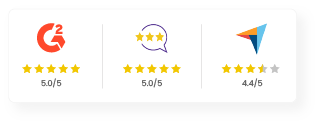A Complete Guide
Mapping Competencies for Success: Leveraging Skills Libraries and Taxonomy
Mapping Competencies for Success: Leveraging Skills Libraries and Taxonomy
The benefits of a skills-first approach aren’t just theories. Companies that have embraced it are already seeing real impact where it matters most: stronger skills, greater agility, more innovation, and higher retention.
A Deloitte report found that organizations that strategically deploy skills are 107% more likely to place talent effectively. And when talent is in the right place, results follow: these companies are 63% more likely to achieve their goals and see a 49% boost in efficiency.
The advantages go beyond just productivity. Companies that prioritize skills over rigid job structures are 57% more agile and 52% more likely to drive innovation. And, as expected, a skills-first approach resonates with employees—early adopters are 98% more likely to retain top performers.
Design suggestion: for infographic
107% more likely to place talent effectively with a strategic skills approach
63% more likely to achieve business goals
49% improvement in organizational efficiency
57% more agile than traditional job-based companies
52% more likely to drive innovation
With results like these, it’s clear that a skills-first shift isn’t a passing trend, but the future. While we can’t predict exactly how every company will implement it, one thing is certain: those who act now will have the edge.
Skills Taxonomy: The Engine Behind Skills-First Talent Development
In a skills-first world, organizations need more than good intentions. They need a system. That’s where an intelligent skills library and taxonomy come in. Think of it as the engine powering everything from better role mapping to future-ready workforce planning.
An intelligent skills library gives you a living, breathing view of the capabilities that matter most—across technical, functional, and leadership domains. It’s a structured, searchable, and scalable way to understand what your people can do and what they need to learn.
The magic really happens when this skills library is paired with a dynamic taxonomy or ontology: a way to link skills to roles, learning pathways, and business priorities. With this in place, companies can:
- Map roles with precision by understanding the exact mix of skills needed for each role, today and tomorrow (competency mapping)
- Spot gaps early by quickly identifying where the organization is falling behind and taking action to close those gaps
- Personalize learning at scale by giving employees clear pathways to grow based on their current skills and future goals
- Plan ahead by aligning talent development with evolving industry demands
This kind of intelligence helps L&D move from reactive to strategic. You’re not just plugging holes, you’re building a workforce that’s agile, aligned, and ready for what’s next.






